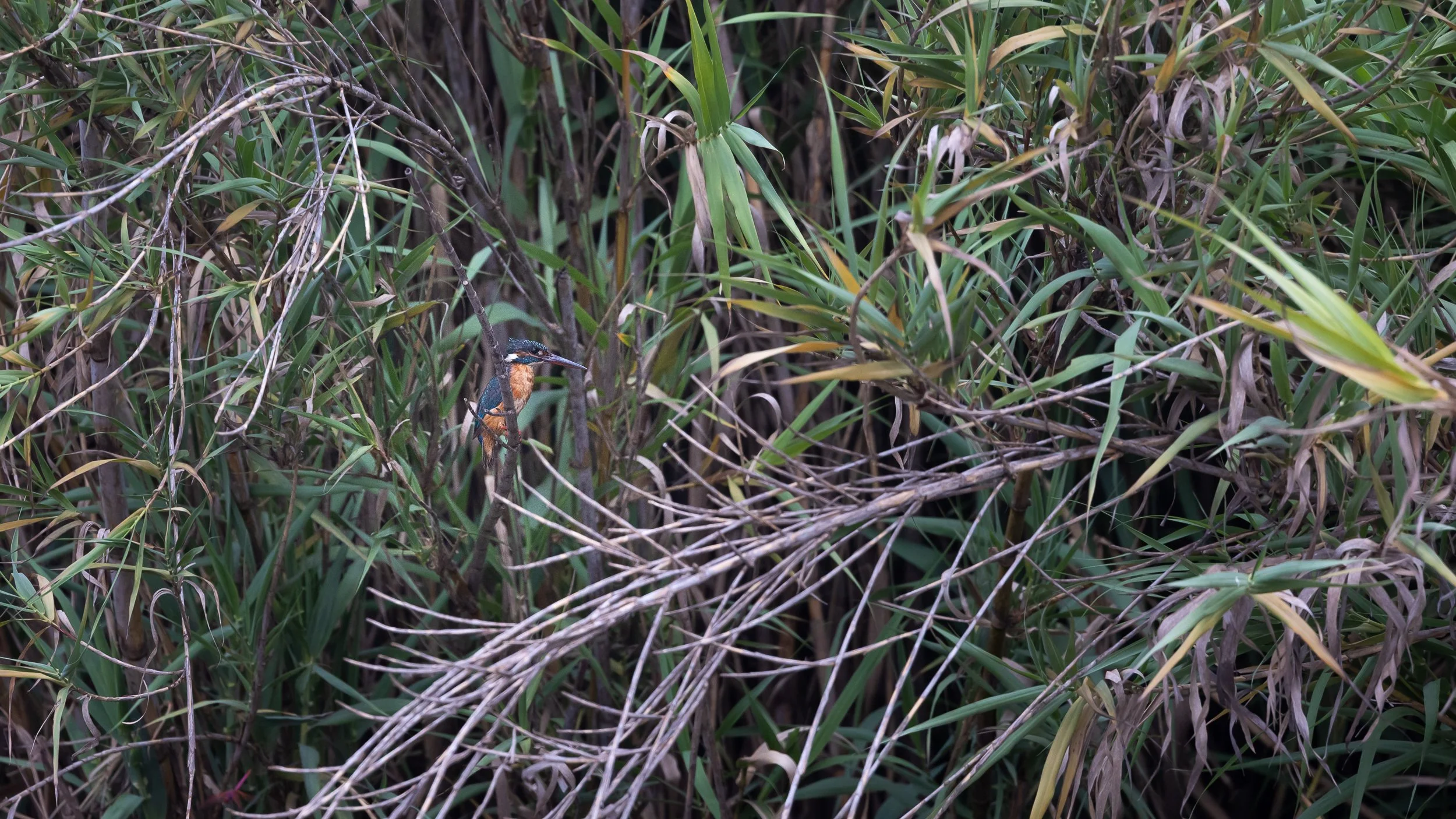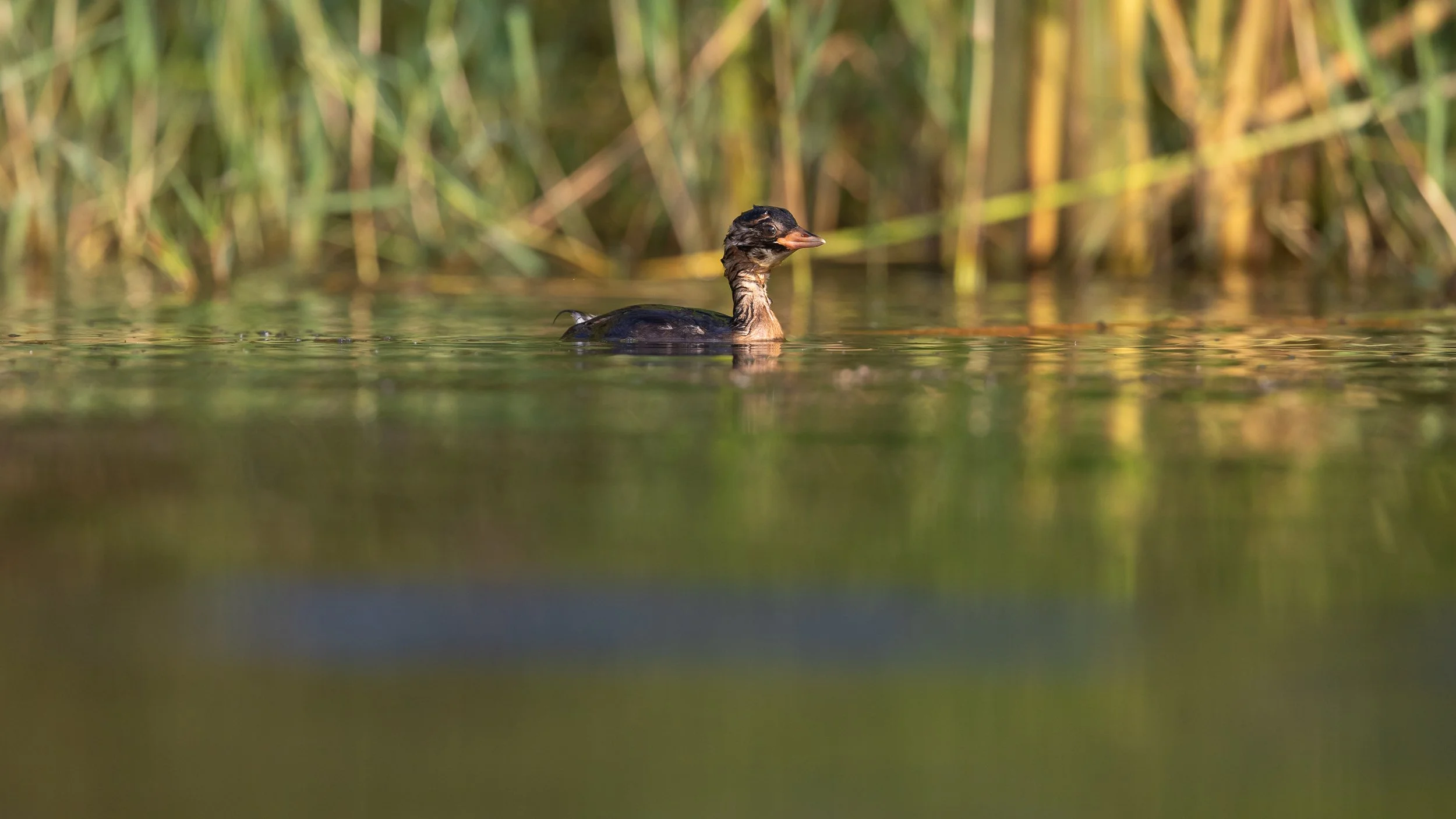Rewilding our land in Portugal : Little Grebes breed on our pond!
On June 15, 2025, we had the incredible surprise to see 3 newborn chicks of Little Grebe on our pond!! We have seen the pair on the pond for several weeks, feeding, displaying, and building a nest. This year, the cattails have been growing strong and high on one end and one side of the pond, creating the perfect habitat for the Little Grebes to nest. Also, we have no predatory fish in the pond, so it is full of life, meaning full of food for the the Little Grebes. On our pond, they can feed on amphibians, aquatic invertebrates, insect larva, etc.
We could not really see if there were eggs or not, so we were so incredibly excited to 3 chicks being born!! As we saw that, I decided to set up a floating hide to document their first days. Since we created our pond in fall 2022, I had the wish to buy a photography floating hide. But these things are not cheap. So I had the idea to use the toy boey that we just got, and cover myself with a camouflage net that I already had. At first try, I realized it was absolutely perfect!
Here I went, trying to see the birds, making sure I would not disturb them. You can easily tell when a Little Grebe is scared, or just bothered. So I entered discretely in the water, and then moved extremely slowly towards the cattails. The adult and the chicks were totally relaxed. Little Grebe chicks are the cutest.
Soon after, only one adult remained. We assume it is the female, but there is no sexual dimorphism for the Little Grebes, so you cannot tell the male from the female just by looking at them. Also, one chick was much bigger than the 2 other ones. How is that possible? Would it mean that this one born a few days before?
10 days after, on June 25, we noticed there were only 2 chicks left unfortunately. No idea what happened, or which predator could have gotten one.
June 26, I went in the water again. It was midday, light was harsh and weather was hot. But I was really happy to waatch them quietly for a moment.
June 27, I went in the water again, earlier in the morning. Sun was already strong but the light was a little bit better. Our dog Jac passed by the edge of the pond several times, which made the Little Grebe family more wary. They did not leave the end of the pond where they often hide. Once again, they were not bothered at all by the presence of this strange rock looking shape floating on the water.
For sunset I came back. The adult came closer to my hide and the two chicks were mostly relaxing by the edge of the vegetation. Being at their level, peacefully watching them live the beginning of their lives, is a great privilege.
June 29, I did a sunset session. Big clouds were covering the sun, light was diffused but not great for taking pictures with my gear. At first our sons were enjoying swimming in the lake, so the grebes stay by the other end of the pond. We noticed though that seeing us arriving by foot to the pond, and getting in the water, does not fully scare them away. They just keep their distance but calmly go on with their lives. Feeding, preening, resting..
A moment later, our sons went back inside and I stayed in the water. A couple of minutes later a Common Kingfisher landed in front of me!
Then the sun showed up and it got glorious! Light was spectacular, grebes came closer, it was truly magical.
I noticed that the adult was only feeding the smallest of the two chicks. Most of the time, the bigger one was further from the adult, in his own corner, and the adult did not seem to pay attention to it. Is it big enough to find food on its own?
July 2, I only saw the bigger of the 2 chicks. No sign of the adult and the other chick.
July 3, I saw both chicks again, but not the adult. I start to get concerned, what is going on? Where is the adult? Did it get preyed on? Did it just leave?
July 4, I walked on our dirt road and looking down at the pond, I was very happy to see the 3 Little Grebes all together again. What a relief. The adult is still here, and is still feeding the smaller chick.
July 6, the bigger chick’s plumage really starts to change color and its size is getting closer to the adult’s, whereas the smaller chick still looks like a baby. The difference between both chicks is striking.
The adult keeps on feeding the smaller chick. It is remarkable to see the dedication of the adult, as it seems to spend literally all day looking for food for its chick. It dives, comes back to the surface after a few seconds, gives the food to its chick if it has any, and then dives again right away.











